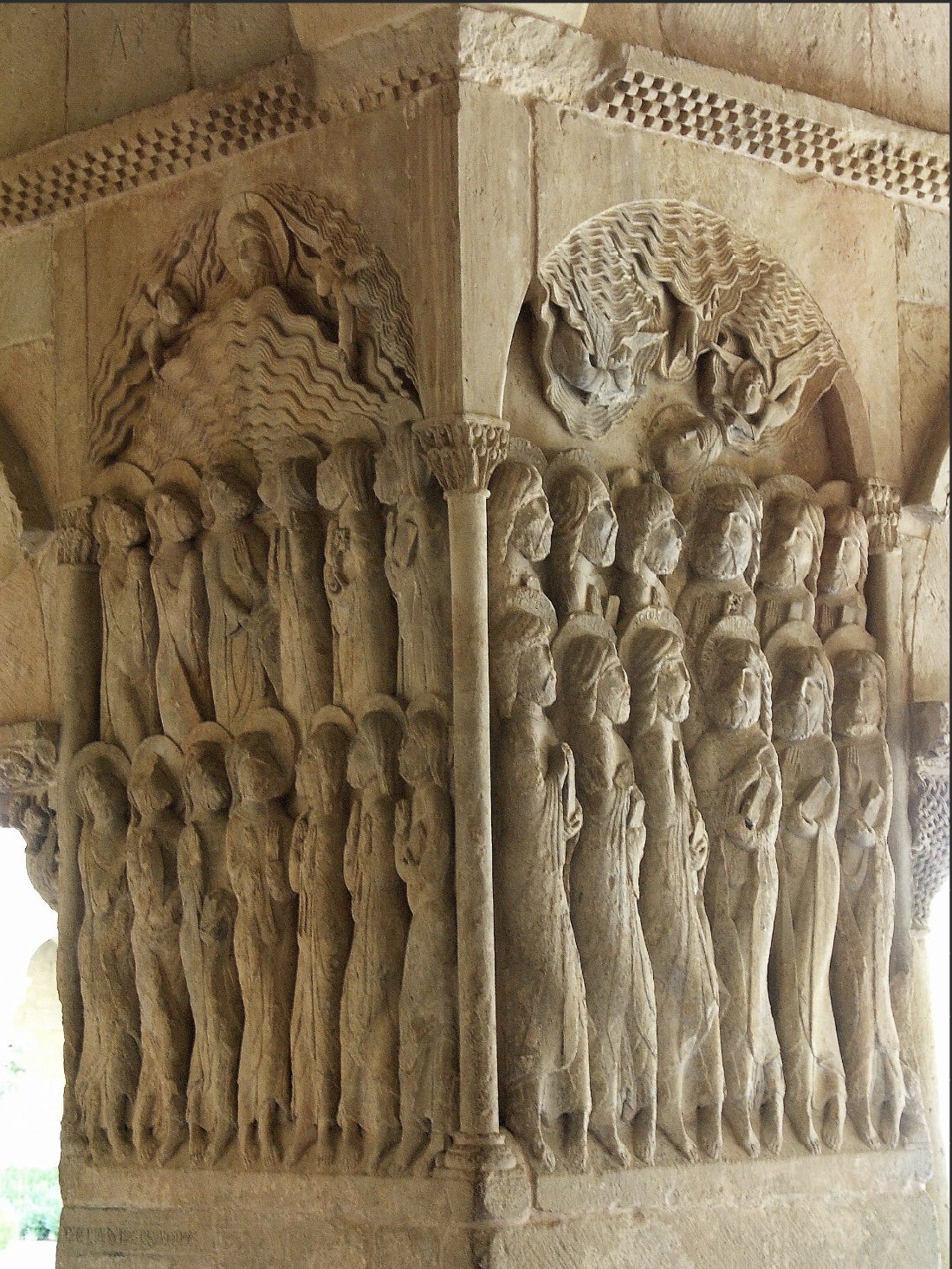
“The Ascension”, late 11th century,, Cloister, Abbey of Santo Domingo de Silos, Burgos Spain.
At first glance this does not look like the Ascension. It becomes a bit more like it, when you understand that the wave like carving at the top represents clouds. It looks like the two angels are pulling the clouds up beneath Jesus. But the wavy carving might also suggest water, which is also interesting. This is the moment when Jesus is taken up from their sight (Acts 1:9). You can see the 12 apostles. Mary is with them in the centre of the upper row. Her hands are open in a gesture of prayer. Peter is to the right, you can see his keys. The apostle to left might be St John. He holds her mantle. What is very unusual about this carving is that we only see Jesus’ face. In other works, before and after this time, artist tried to give a picture of what the disciples saw and often they just showed his feet sticking out from a cloud. But visual representation did not really concern this11th century sculptor. This work is theological rather than representational. In our current liturgy for the feast of the Ascension, the opening prayer includes, “where he the Head has gone before in glory, the Body is called to follow in hope”. Behind this is the theological idea of of the Mystical Body of Christ. This idea goes back to St Paul and is developed further by St Augustine and Pope St Leo the Great. In an article from 2007, Dom Antonio Manuel Pérez OSB argues (conclusively, in my humble opinion) that it is very likely that this idea of Christ as the head of the mystical body was already the liturgical texts, homilies and prayers used at Santo Domingo de Silos in the 11th Century. The text from our missal, quoted above, is about our hope of reaching heaven. But Dom Antonio shows that it is likely that the actual texts in use at the time developed this idea to include not just the hope of heaven, but that here and now He, the Head of this Mystical Body, guides and vivifies it. I said that cloud might also looks like water. Is this an allusion to the Baptism of Christ? We become part of his body in our own baptism. This carving is on one side of the south east corner pillar of the cloister. Right next to it is the image of Pentecost, also with with Mary and the Apostles. The working of the Holy Spirit is implied in this relief and made explicit in the Pentecost scene. What looked like His going away is in truth His abiding presence in us and with us. But more than this it told the monks of Silos and tells us today that we are members of the body of which he is the head.

The Catholic Chaplaincy serves the students and staff of the University of Edinburgh, Edinburgh Napier University and Queen Margaret University.
The Catholic Chaplaincy is also a parish of the Archdiocese of St Andrews and Edinburgh (the Parish of St Albert the Great) and all Catholic students and staff are automatically members of this parish.